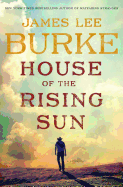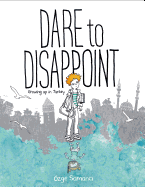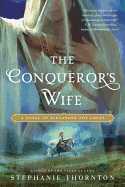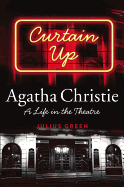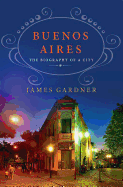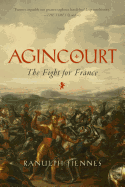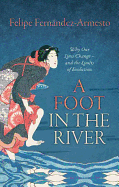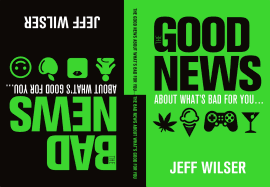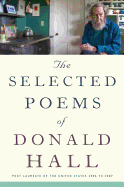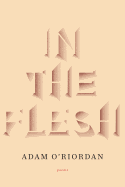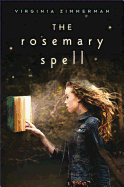Tuesday, December 29, 2015
At the end of the year, we like to look back on the past few months to see what sold well and what surprised booksellers. It's also a chance to present some titles to purchase now, in case in case your oblique (or overt) hints didn't pan out.
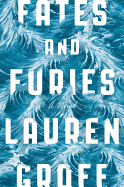 We queried more than 20 bookstores across the country; there was an unsurprising consensus about Patti Smith's M Train, Ta-Nehisi Coates's superb Between the World and Me, H Is for Hawk by Helen Macdonald, Harry Potter and the Sorcerer's Stone, illustrated by Jim Kay, and Randall Munroe's Thing Explainer: Complicated Stuff in Simple Words, all of which flew off the shelves. Gratitude, essays by Oliver Sacks about coming to terms with his own death, sold quite well, as did Elena Ferrante's Neapolitan novels: My Brilliant Friend, The Story of a New Name, Those Who Leave and Those Who Stay, The Story of the Lost Child (warning: they are addictive). Fates and Furies by Lauren Groff was the favorite choice for many (including President Obama).
We queried more than 20 bookstores across the country; there was an unsurprising consensus about Patti Smith's M Train, Ta-Nehisi Coates's superb Between the World and Me, H Is for Hawk by Helen Macdonald, Harry Potter and the Sorcerer's Stone, illustrated by Jim Kay, and Randall Munroe's Thing Explainer: Complicated Stuff in Simple Words, all of which flew off the shelves. Gratitude, essays by Oliver Sacks about coming to terms with his own death, sold quite well, as did Elena Ferrante's Neapolitan novels: My Brilliant Friend, The Story of a New Name, Those Who Leave and Those Who Stay, The Story of the Lost Child (warning: they are addictive). Fates and Furies by Lauren Groff was the favorite choice for many (including President Obama).
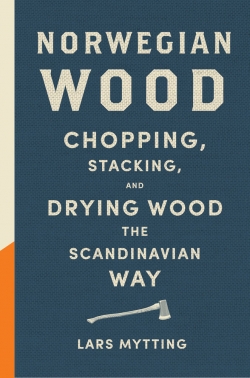 Nonfiction, which for some stores trumped fiction, provided some unexpected bestsellers. Notorious RBG: The Life and Times of Ruth Bader Ginsberg by Irin Carmon and Shana Knizhnik; Mary Beard's S.P.Q.R.: A History of Ancient Rome; The Soul of an Octopus: A Surprising Exploration into the Wonder of Consciousness by Sy Montgomery; and Lars Mytting's Norwegian Wood: Chopping, Stacking, and Drying Wood the Scandinavian Way. A cookbook on multiple lists was The Food Lab by Kenji Lopez-Alt. The beautiful graphic book Thunder & Lightning: Weather Past, Present, Future by Lauren Redniss, and a frank and hilarious memoir, Furiously Happy: A Funny Book About Horrible Things by Jenny Lawson, round out the list.
Nonfiction, which for some stores trumped fiction, provided some unexpected bestsellers. Notorious RBG: The Life and Times of Ruth Bader Ginsberg by Irin Carmon and Shana Knizhnik; Mary Beard's S.P.Q.R.: A History of Ancient Rome; The Soul of an Octopus: A Surprising Exploration into the Wonder of Consciousness by Sy Montgomery; and Lars Mytting's Norwegian Wood: Chopping, Stacking, and Drying Wood the Scandinavian Way. A cookbook on multiple lists was The Food Lab by Kenji Lopez-Alt. The beautiful graphic book Thunder & Lightning: Weather Past, Present, Future by Lauren Redniss, and a frank and hilarious memoir, Furiously Happy: A Funny Book About Horrible Things by Jenny Lawson, round out the list.
A few older books continued to be deservedly popular this holiday season: Brooklyn by Colm Tóibín and The Martian by Andy Weir, both movie-driven; and two of our favorites: A Man Called Ove by Fredrik Backman and All the Light We Cannot See by Anthony Doerr. --Marilyn Dahl, editor, Shelf Awareness for Readers
The Conqueror's Wife: A Novel of Alexander the Great
by Stephanie Thornton
For readers who love ancient history but have been frustrated by a dearth of women in popular narratives, The Conqueror's Wife: A Novel of Alexander the Great offers a refreshing new perspective. Stephanie Thornton (The Tiger Queens: The Women of Genghis Khan) has devoted three previous novels to illuminating overlooked women from ancient history, and this book does the same.
While Alexander leads his ruthless army into battle, the women he encounters assert themselves even as society oppresses them. In the recently conquered Thessaly, a threatened mother lures a greedy mercenary to his death with the promise of jewels in a well. Impressed by her courage, Alexander spares her from his armies. In Persia, a young woman escapes the grasp of a lecherous old man by improvising a quick lie in front of a crowd of nobles. She purposefully seduces Alexander for her own benefit and, later, wins him over in marriage. Meanwhile, the ruler's younger sister, Thessalonike, is relentless in her desire to explore the world, and his mother is a merciless manipulator who leads Dionysian rituals and defies even her own powerful son.
In addition to its shrewd characters, The Conqueror's Wife is enjoyable for its rich details of life in the ancient world. In Macedon, nobles feast on crusty olive bread, dried apricots, sow's udder stuffed with leeks and cumin, and milk-fed snails in pepper sauce. In Persia, princesses whiten their skin with ground lentils, barley and powdered deer antler. It's a world of both sumptuous luxury and brutal violence, and the story is sure to entertain fans of history, romance and political drama alike. --Annie Atherton
Discover: A richly detailed historical novel about the women who fought and supported Alexander the Great.
Mystery & Thriller
House of the Rising Sun
by James Lee Burke
Whether modern-day Louisiana or early 20th-century Texas, the worlds James Lee Burke (Wayfaring Stranger) creates crackle on his pages. The vivid sights, sounds and smells envelop readers observing the tormented lives of his troubled characters. House of the Rising Sun continues that exemplary standard for fiction with a captivating story of family, faith, betrayal and redemption.
In this fourth Hackberry Holland book, the former Texas Ranger is searching for his estranged son, Ishmael, in Mexico when he wanders into the middle of an arms deal. Hack destroys the munitions but discovers a gem-encrusted cup among the arsenal, which he tucks away and carries back to Texas.
Powerful businessman Arnold Beckman believes the artifact is rightfully his and will stop at nothing to take it back, including kidnapping war hero Ishmael, who is recovering from serious leg injuries sustained at the Great War's Battle of the Marne. Hack must fight his personal demons and outsmart the deadly Beckman in order to save his son.
Brimming with delectably evil villains and heroes whose white hats have grown dingy from the dirt they've rolled in, House of the Rising Sun is a masterstroke in Burke's exceptional body of work. He balances the characters' introspection with suspenseful action, keeping the momentum of the novel quick and engaging; packs insightful thoughts on humanity into colorful quips; and, despite the bleakness of the plot, interjects hilarious scenes like Hack learning to drive a motorcar.
Everyone should experience the beauty of James Lee Burke's fiction at least once. House of the Rising Sun is a perfect opportunity to do so. --Jen Forbus of Jen's Book Thoughts
Discover: Former Texas Ranger Hackberry Holland confronts a ruthless arms dealer who has kidnapped his son.
Biography & Memoir
Curtain Up: Agatha Christie: A Life in the Theatre
by Julius Green
Dame Agatha Christie (1890–1976) is generally acknowledged as "the Queen of Crime"; her 66 detective novels (and 14 story collections) have sold more than two billion copies, making her the bestselling novelist of all time. A lesser-known aspect of her life is her work as a prolific playwright. Julius Green (How to Produce a West End Show) has rectified this situation with Curtain Up, an illuminating and exhaustive examination of Christie's 30 plays. Although Christie began writing plays as a teenager, none of her works were staged until she was 40 (a decade after her first novel, The Mysterious Affair at Styles). Her theater career didn't ignite until she was in her 60s, with The Mousetrap in 1952 and Witness for the Prosecution in 1953. (The Mousetrap is still running in London, making it the longest-running play in theater history.)
Green, founder of the Agatha Christie Theatre Company, which has exclusive rights to Christie's original plays in the U.K., is a meticulous historian. He cross-references the "notoriously inaccurate chronology" of Christie's autobiography, and her nearly illegible correspondences and notebooks, with the papers, memoirs and interviews of contemporaries to follow each play from inception to staging.
Green believes Christie got more pleasure writing plays than novels, the theater allowed her to expand beyond mysteries into comedies and psychological dramas. When she adapted her Hercule Poirot and Miss Jane Marple mysteries into plays, she distanced them from their source by dropping the detectives from the cast. Theater buffs and Christie fans will delight in this fascinating and well-researched appreciation. --Kevin Howell, independent reviewer and marketing consultant
Discover: Julius Green's fascinating Curtain Up explores an often overlooked side of Agatha Christie--her prolific and successful work as a playwright.
History
Conquerors: How Portugal Forged the First Global Empire
by Roger Crowley
In works such as City of Fortune, Empires of the Sea and 1453, historian Roger Crowley focused on the struggles between the Renaissance powers--Christian and Muslim alike--over who would control the Mediterranean and the lucrative trade between East and West. In Conquerors: How Portugal Forged the First Global Empire, Crowley moves his account outside the Mediterranean to follow Portugal's maritime explorations down the coast of Africa, and its gunpowder-fueled entrance into the Indian Ocean.
Crowley expands the familiar stories of the Age of Exploration into an account that is darker and more complicated than the version presented in world history texts. He does not downplay Portugal's expansion of nautical technology and geographic knowledge, or the heroic feats of courage, endurance and seamanship involved in its global expansion. Instead, he places both knowledge and heroism within a historical context that explains them both. Poised between the era of the Crusades and the Renaissance, the Portuguese explorations were driven as much by the desire to forge an alliance with the mythical Christian king Prester John against the Muslims, as by the desire for gold and spices. That crusading instinct and a fundamental lack of knowledge about Asia and the Middle East meant that the Portuguese entered the trading world of the Indian Ocean with guns blazing. The result was a series of misunderstandings and violent encounters that resulted in Portuguese control of the maritime East-West trade--laid out by Crowley in gruesome and fascinating detail. --Pamela Toler, blogging at History in the Margins
Discover: Conquerors tells the violent and often ugly story of how Portugal won a global empire.
Buenos Aires: The Biography of a City
by James Gardner
James Gardner, an art and culture critic, has created a loving history of a memorable metropolis in Buenos Aires: The Biography of a City. Often called "the Paris of the South," Buenos Aires was founded by a few dozen Spanish conquistadors in the 1500s. Gardner details how it eventually achieved its modern status as a bustling, cosmopolitan capital.
The residents of Buenos Aires, known as porteños, long struggled to thrive under strict Spanish laws, and when Napoleon ousted the Spanish king in 1810, the porteños saw their chance for independence. There was little architecture of note, so they emulated European style as the city boomed, making Buenos Aires quite different architecturally from most other Spanish colonial cities.
Gardner discusses the effects of several dictators who ruled in Argentina--most notably Juan Manuel de Rosas and Juan Perón--and how their despotism has left lingering marks on the culture of Buenos Aires, with a dearth of creativity during the years of their rule.
What makes Buenos Aires stand out is the attention Gardner pays to the details. He discusses the sizing of city blocks, why the grid was laid out the way it was, and how the corners of intersections are blunted into ochavas, making a porteño street corner stand out from almost any other intersection in the world.
Historians, architects, city planners and armchair travelers are sure to enjoy Buenos Aires. Including many photographs taken by Gardner himself, the book is a glimpse into a lively, modern city, with a long and fascinating past. --Jessica Howard, blogger at Quirky Bookworm
Discover: A look at the history and architecture of Buenos Aires, the "Paris of the South."
Agincourt: The Fight for France
by Ranulph Fiennes
Sir Ranulph Fiennes (The Feather Men) has an impressive pedigree: he can trace his ancestry back to Charlemagne, through the Norman conquest of England in 1066 (one of his ancestors is depicted on the famous Bayeux Tapestry telling William the Conqueror to retreat from the Battle of Hastings, advice the future king ignored) and the Hundred Years' War between England and France (1337 to 1453). What makes Fiennes, an English explorer, an interesting choice to write about the Battle of Agincourt is his familial connection to the conflict. His ancestry split when the Normans invaded England--some stayed behind in Northern France while others followed William across the Channel. Thus when King Henry V faced off against the French near Agincourt village in 1415, Fiennes had family on both sides of the battle.
The Hundred Years' War came about thanks to complicated webs of intermarriage between Anglo-Norman and French dynasties. Fiennes's relatives implicated in the war are so numerous that he relies on italicizing names of relations, rather than the repetitive use of phrases like "my ancestor so-and-so." At times this chronicle of names veers into something only a genealogy junkie could love, but Fiennes is quick to tie his own family tree into a broader explanation of the geopolitical circumstances that led to Agincourt. His account of the battle itself is thrilling as any popular historical fiction, and he continues to the conclusion of the war, which raged for another 38 years. Agincourt, published 600 years after the battle, turns usually impersonal history into a family affair. --Tobias Mutter, freelance reviewer
Discover: A man with distant relatives on both the French and English sides explores the Battle of Agincourt.
Social Science
A Foot in the River: Why Our Lives Change--and the Limits of Evolution
by Felipe Fernandez-Armesto
A Foot in the River: Why Our Lives Change--and the Limits of Evolution is a challenging book. There are limits to what even an accomplished professor and historian like Felipe Fernandez-Armesto can accomplish in simplifying the complex argument delivered in this short, highly ambitious book. To paraphrase the somewhat clunky title, Fernandez-Armesto proposes something akin to a unified theory of culture and cultural change, a multi-pronged idea with many corollaries and one main enemy: the idea that evolution is sufficient to explain culture and cultural change.
It may sound like a distinction significant only to argumentative professors, but Fernandez-Armesto is quick to identify areas where the idea of evolutionary forces as source and driver of culture has done real damage. He notes the disturbing frequency with which dry academic theories have been repurposed as justifications for immoral practices such as slavery and eugenics. Fernandez-Armesto criticizes both the odious consequences and the theories themselves: "Cultural traits do not replicate like genes--people accept or reject them according to criteria of their own--criteria that have nothing to do with... enhancing the survival of the group."
A Foot in the River is also challenging in the sense that it directly takes on popular ideas of cultural change and their famous proponents. Fernandez-Armesto delivers body blows to both genetic and environmental determinism, as well as eviscerating more recent concepts like Richard Dawkins's "memes." Readers may find themselves compelled to poke holes in Fernandez-Armesto's theses as they read, but that is perhaps how the book is best read: as a challenge. --Hank Stephenson, bookseller, Flyleaf Books
Discover: A Foot in the River is a brainy, ambitious attempt to subvert evolutionary theories of culture and introduce new ways of understanding cultural change.
Humor
The Good News About What's Bad for You... the Bad News About What's Good for You
by Jeff Wilser
Red meat, alcohol, stress, video games: the news touts them as terrible, sometimes even life-threatening. But Jeff Wilser (The Man Cave Book) digs further into the information on these vices and more. The Good News About What's Bad for You looks beyond the titillating headlines to the big picture, then scales that image down to a couple of pages per topic, highlighting the overall results in layman's terms. The outcomes aren't necessarily as alarm-worthy as the press might want readers to believe.
Turn the book over and Wilser sets his sights on The Bad News About What's Good for You, saying that kale, juice cleanses, retirement and yoga may not be all they're cracked up to be.
Using a conversational tone ripe with humor, Wilser encourages readers to feel less guilt, consider the relative risk versus the absolute risk--if something increases risk 500% but the initial risk is only 0.000001, chances are still minuscule it will ever happen--and beware the trap of alarming titles used for the sole purpose of shock.
The Good News About What's Bad for You... the Bad News About What's Good for You requires an open mind. Even Wilser has a tendency to express skepticism at research contradicting his own beliefs. But the overarching theme of moderation is vital, and Wilser's delivery is comically entertaining.
The short segments keep the book moving swiftly and the collective information is fascinating. Studies are still out, but it's probably safe to say this book is good for us all. --Jen Forbus of Jen's Book Thoughts
Discover: From fidgeting to fruit, the complete story of what science says about things deceivingly touted as either good and bad for one's well-being.
Poetry
The Selected Poems of Donald Hall
by Donald Hall
Poet laureate of the United States from 2006 to 2007, Donald Hall has compiled more than 70 of his favorite poems in this collection. Arranged in chronological order, these poems reflect the changes in his writing over the course of his life. Hall writes, "As I read my poems in chronological order, I am aware of changing sounds and shapes. I move from rhymed stanzas to varieties of free verse, and later... go back to meter again."
Hall's poems speak of life, of love, of nature and the intertwining of these elements as he moved from boyhood to adulthood to old age. Many of his later poems center on his love for his wife, Jane Kenyon, and the subsequent despair he felt at her death. These poems in particular haunt the reader long after the page has been turned. Hall juxtaposes the beauty of yellow daffodils with a withering body in "Letter with No Address," and recalls the blue coat his wife wore as she walked the dog, only to realize that the coat is just a remnant of his imagination in "Weeds and Peonies." Short lines carry powerful words, as in "After Three Years," where Hall writes, "You think that their/ dying is the worst/ thing that could happen./ Then they stay dead." Other, longer poems tell miniature stories, such as "Great Day in the Cows' House" or "Ox Cart Man." Diverse and multifaceted, Hall's poetry reflects the complexity of life in all its good and bad parts. --Lee E. Cart, freelance writer and book reviewer
Discover: A passionate poet gathers the best from his lifetime of work in this rich compilation.
In the Flesh: Poems
by Adam O'Riordan
Adam O'Riordan's poems touch on a variety of subjects, moods and settings with maturity beyond his early-30s age and a reach beyond his English roots. His first collection, In the Flesh, is a rich tapestry of form and feeling (what Robert Frost called "the sound of sense"), containing poems that ask to be read aloud--and then read again. Like Frost's poetry and that of the English Romantics, O'Riordan's work is often set in the natural world but always comes back to the human significance within it. "Goooogle" has lonely men "sit/ pale as geishas,/ by the glow of obsolete/ computers.... The busy crickets/ of their fingers/ stoking engines/ with maiden names/ and zip codes/ of ex-lovers."
The poems reflect an earthy lustiness to life--the vulnerability and substance of the "flesh" in his title. O'Riordan's sensitivity to history, drama and human frailty come together in the five-part poem "The Act of Falling," which describes the 1913 death of the British suffragette Emily Davison, trampled by the king's runaway horse at the Epsom Derby:
"a bobbing speck
of horse, rider-less
in the middle distance,
its blood pumping a message
from haunch to forelock,
an imperative she understands:
telling it to cross the line
at whatever cost,
to cross the line alone if you must."
In the Flesh carries way more heft than its brevity suggests and leaves us eager to see what Adam O'Riordan offers next. --Bruce Jacobs, founding partner, Watermark Books & Cafe, Wichita, Kan.
Discover: O'Riordan's first collection of poems is rich in history, form and the underlying fragility of "the flesh."
Children's & Young Adult
Dare to Disappoint: Growing Up in Turkey
by Özge Samanci
All Özge wants to do when she grows up is be like her scuba-diving hero Jacques Cousteau. Or maybe an actress. Why are there so many obstacles? In her whimsical graphic memoir, Turkish author-illustrator Özge Samanci tells the story of her 1980s childhood in Izmir, Turkey, and later Istanbul, with a charmingly fresh perspective.
Unlike panel-style graphic novels, the playful, inviting pages of Dare to Disappoint are filled with spot illustrations with strategic hints of color, cartoon-bubble dialogue and the occasional photographed collage, pulled together with a brief narrative. The memoir begins when little blonde Özge is six, and she and her mother are using binoculars to watch her older sister, Pelin, at school across the street. "I wanted to be on the other side of the binoculars," writes Özge. In first grade, she instantly falls for the "huge, gorgeous woman" who teaches her students about Turkish history, including the late Atatürk, the "Father of Turks," whose image was plastered everywhere. Özge, a good soldier, begins to revere him, even standing on a chair to pledge her love to his portrait.
Turkish history, gender studies, polarized politics and religious conflicts are part and parcel of a funny, engaging story that never veers too far from Özge's frank, at-times rebellious, often hilarious point of view on things like smuggled Corn Flakes, playing the Dallas song on a mandolin, and, most poignantly, her and her sister's dogged path to academic success, as they hope to earn their rigid father's approval. Amidst the vividly specific Turkish setting, Samanci brilliantly reflects the universal challenge of finding one's voice--and daring to disappoint. --Karin Snelson, children's & YA editor, Shelf Awareness
Discover: A delightful graphic novel-style memoir about a Turkish girl who wants to be Jacques Cousteau, or possibly an actress, but not an engineer.
The Rosemary Spell
by Virginia Zimmerman
The Rosemary Spell begins as 13-year-old Rosemary Bennett is setting up her bedroom in her dad's former home office, the one he abandoned 10 years ago when he left the family. Fortunately, her best friends and fellow bookworms Shelby and Adam Steiner, who are brother and sister, are on hand to help. Adam--who relishes order--dives in to categorize her books, but 16-year-old Shelby, who has a fresh flock of friends, can't stick around for long. Rosemary feels a "stabby ache" when Shelby takes off, but is soon distracted by a stunning discovery. When she and Adam break into the room's long-locked cupboard, they find a book--an ancient, possibly magical, leather diary that might have belonged to Shakespeare himself. And here the adventure--and a lot of literary detective work--starts to unfold.
The mystery of the old diary whose puzzling words come and go turns into a nightmare when, later that month, Rosemary and Adam are reading a poem they found in the diary and Shelby--poof--vanishes. She disappears from everyone's memory, too, and Rosemary and Adam desperately struggle to remember her so they can bring her back. They enlist the help of elderly local poet Constance Brooke, whose notes are in the old diary, but it's hard to glean the real clues from her wispy Alzheimer's-diminished memories. Avid middle-grade readers, Shakespeare buffs and poets will revel in Zimmerman's earnest and engaging exploration of memory and memory loss, loss in general, growing up, evolving friendships, and the joy and power of words. --Karin Snelson, children's & YA editor, Shelf Awareness
Discover: For 12-year-old Rosemary, the discovery of a mysterious old book seems like just a fun puzzle to solve, until people start disappearing.


